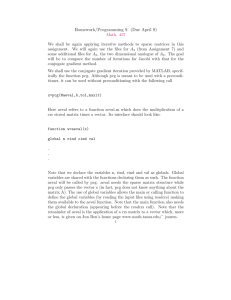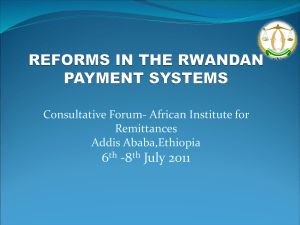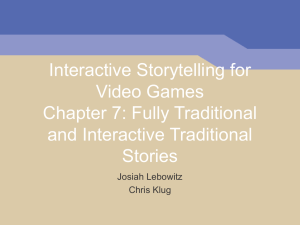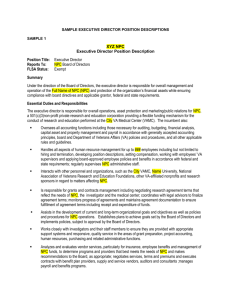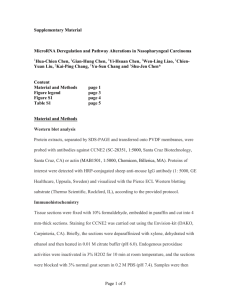Summary
advertisement
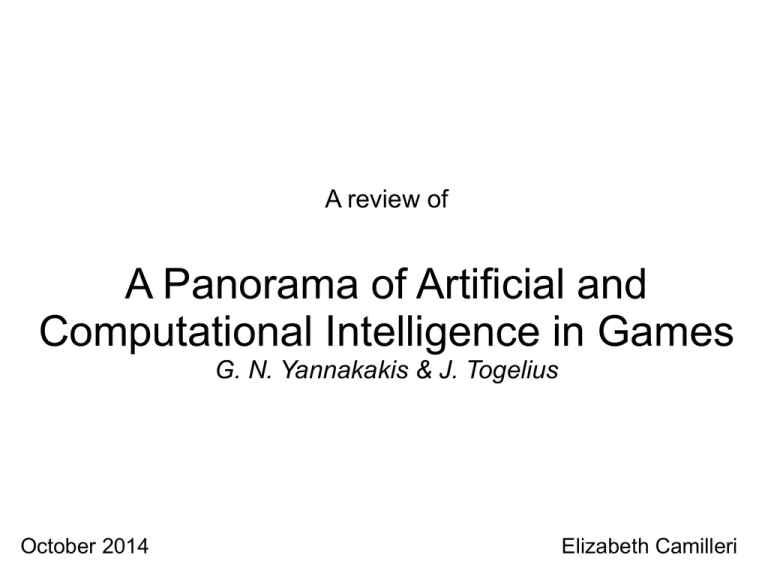
A review of A Panorama of Artificial and Computational Intelligence in Games G. N. Yannakakis & J. Togelius October 2014 Elizabeth Camilleri Overview I. Introduction 10 main Game AI reserach areas II. 3 Panoramic views of Game AI Research The method (computer) perspective The end user (human) perspective The player-game interaction perspective III. Interconnections between the 10 areas IV. Summary & Conclusions 2 I. Introduction (1) Artificial Intelligence (AI) – methods based on logic eg. Planning & reasoning Computational Intelligence (CI) – nature-inspired methods eg. Evolutionary computation & ANNs No official agreement on meanings “Game AI” + “AI in games” used interchangeably = both areas of AI + CI i.e. the field covering everything that requires some form of intelligence in games. 3 I. Introduction (2) Dagstul Seminar on Artificial and Computational Intelligence in Games Several papers about (10) specific AI areas In contrast, this paper aims to: Connect the areas together Study interconnections actual potential Propose a taxonomy for a common understanding & vocabulary in Game AI/CI. 4 10 main Game AI research areas 1) Non-player character (NPC) behaviour learning [NPC] 2) Search and planning [S&P] 3) Player modeling [PM] 4) Games as AI benchmarks [AI Bench.] 5) Procedural content generation [PCG] 6) Computational narrative [CN] 7) Believable agents [BA] 8) AI-assisted game design [AI-Ass.] 9) General game AI [GGAI] 10)AI in commercial games [Com. AI] 5 1) [NPC] – using reinforcement learning techniques to learn NPC behaviours that play games well. 2) [S&P] – search is fundamental to computer science with many core algos being search algos (eg. Dijkstra). Planning is an application of search in state space – planning algos search for the shortest path from one state (start) to another (end). 3) [PM] – computational models creating for detecting how the player perceives and reacts to gameplay through physiological measurements or questionnaires. 6 4) [AI-Bench.] - games or parts of games (eg. levels or tasks) that offer a way to evaluate the performance of external AI systems on the task(s) associated with the benchmark. 5) [PCG] – the automatic creation of game content (eg. levels, maps, items, quests & textures). 6) [CN] – focuses on the representational & generational aspects of stories that can be told via a game. 7) [BA] – the study of mechanims for the construction of agent architectures that appear to have believable or human-like characteristics. 7 8) [AI-Ass.] - development of AI-powered tools that support the game design and development process – can assist in the creation of game content varying from levels & maps to game mechanics & narratives. 9) [GGAI] – the study of having game agents to competently play a large variety of games and not just one in particular. 10) [Com. AI] – AI that does not necessarily provide general solutions to deep problems (as in Academic Research but works well enough and looks good to the player. Eg. acceptable to give AI players extra information, teleport characers or invent units out of nothing. 8 II. 3 panoramic views of Game AI Research Authors first view Game AI from 3 different perspectives each with a different focus: 1) The method (computer) 2) The end user (human) 3) The player-game interaction 9 1. The methods (computer) perspective 6 main AI methods 1) Evolutionary computation 2) Reinforcement learning 3) Supervised learning 4) Unsupervised learning 5) Planning 6) Tree search Which methods are dominant or secondary in each of the 10 Game AI areas? 10 Some observations: Games as AI Benchmarks omitted as all methods are applicable. PM, BA, AI-Ass. = top 3 areas with most varied methods. PCG = area with least methods. Empty cells = potential new intersections between AI areas and methods 11 2. The end user (human) perspective 3 core dimensions involved in AI: The process that AI follows The context under which algorithms operate The end user type that benefits from this outcome Serves as framework to classify the 10 Game AI areas. Each area follows a process under a context for a particular end user type. 12 What can AI do within games? What can AI methods model, generate & evaluate? For whom? 13 3. The player-game interaction perspective Focus on interaction between player (human) and game (computer) Use 6 Game AI areas that affect the Player end user type (see prev. Slide) Present the relationships involved in a playergame interaction framework 14 15 III. Interconnections between the 10 areas Analysis of how the areas influence each other Only direct influences (102 – 10 = 90 impractical) Existing and strong Outgoing: black area reached by arrow Incoming: thick solid red line around area Existing and weak Outgoing: dark grey area reached by arrow Incoming: solid red line around area Potentially strong Outgoing: light grey area reached by arrow Incoming: dotted red line around area 16 1. NPC behaviour learning 17 2. Search and planning 18 3. Player modeling 19 4. Games as AI benchmarks 20 5. Procedural Content Generation 21 6. Computational Narrative 22 7. Believable Agents 23 8. AI-assisted game design 24 9. General Game AI 25 10. AI in commerial games 26 IV. Summary & Conclusions Summary: Identified 10 most active Game AI areas Placed on 3 holistic frameworks: Results: AI method mapping End user taxonomy Player-game interaction loop Dominant algorithms + potential new methods in each area Different impact of each area on different end user types Influence of different areas on the player, the game and their interaction 27 Summary (contd.): Detailed analysis of the 10 key Game AI areas and their interconnections Most influential areas: Games as AI benchmarks NPC behaviour learning PCG General Game AI Most influenced areas: PCG Commercial Game AI 28 Conclusions: Influences show much room for further exploration in research: Existing and strong (6) Existing and weak (33) Potentially strong (13) Areas currently very active: NPC behaviour learning + S&P +GGAI PM + PCG 29 Conclusions (contd.): Currently strong areas (via clustering trending topics in recent conferences): PM PCG Narritive generation Unexploited/underexploited or potentially strong connections: PM -> BA BA -> PCG & AI-Ass. game design GGAI -> AI-Bench. PM, AI-Ass. game design, CN -> Com. AI 30 Conclusions (contd.): Apparent shift in the use of Game AI from NPC control and playing board games well (game agents) (more than 75% of conference papers links in 2005) to more non-traditional applications (52% links in 2011 excluding NPC & game agents) for the development of better games. 31 Thank you. 32







